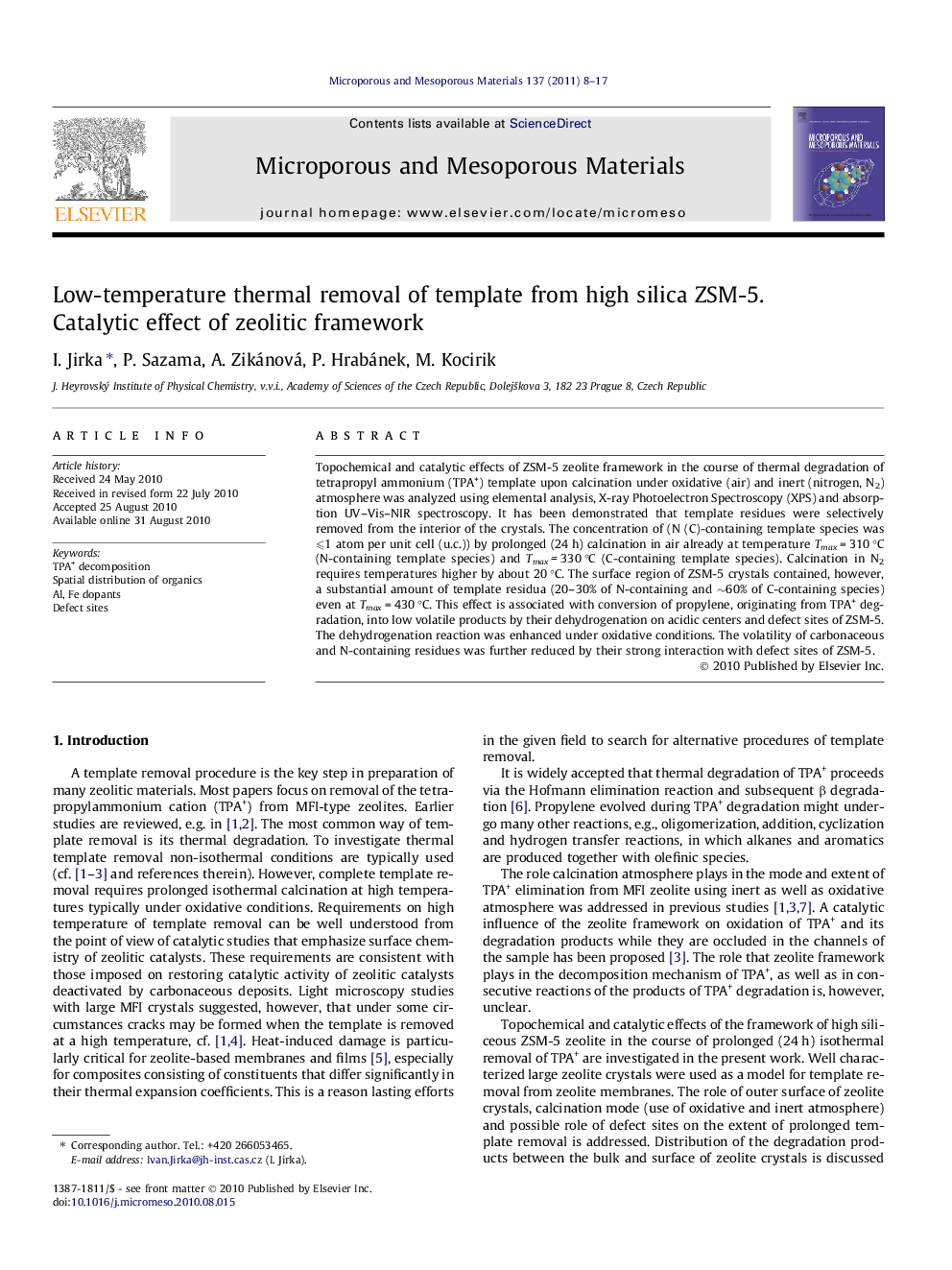| Article ID | Journal | Published Year | Pages | File Type |
|---|---|---|---|---|
| 74980 | Microporous and Mesoporous Materials | 2011 | 10 Pages |
Topochemical and catalytic effects of ZSM-5 zeolite framework in the course of thermal degradation of tetrapropyl ammonium (TPA+) template upon calcination under oxidative (air) and inert (nitrogen, N2) atmosphere was analyzed using elemental analysis, X-ray Photoelectron Spectroscopy (XPS) and absorption UV–Vis–NIR spectroscopy. It has been demonstrated that template residues were selectively removed from the interior of the crystals. The concentration of (N (C)-containing template species was ⩽1 atom per unit cell (u.c.)) by prolonged (24 h) calcination in air already at temperature Tmax = 310 °C (N-containing template species) and Tmax = 330 °C (C-containing template species). Calcination in N2 requires temperatures higher by about 20 °C. The surface region of ZSM-5 crystals contained, however, a substantial amount of template residua (20–30% of N-containing and ∼60% of C-containing species) even at Tmax = 430 °C. This effect is associated with conversion of propylene, originating from TPA+ degradation, into low volatile products by their dehydrogenation on acidic centers and defect sites of ZSM-5. The dehydrogenation reaction was enhanced under oxidative conditions. The volatility of carbonaceous and N-containing residues was further reduced by their strong interaction with defect sites of ZSM-5.
Graphical abstractFigure optionsDownload full-size imageDownload as PowerPoint slideResearch highlights► Thermal removal of template (tetrapropyl ammonium, TPA+) from ZSM-5 crystals is substantially affected by their outer surface. ► Temperature required to reduce the template species from bulk of the zeolite crystals to ⩽1 atom C (N) u.c.−1 does not exceed 400 °C. ► Only moderate decrease of the concentration of template species is observed at 400 °C on the surface of zeolite crystals regardless calcination medium (oxidative vs. inert one). ► Retention of template species on the surface of the crystals is induced by their conversion to heavy unsaturated residua. This conversion is enhanced in oxidative atmosphere, however, overall concentration of template residua is not affected by calcination mode. ► Conversion of template species does not require centers associated with Al (Fe) sites of zeolite.
